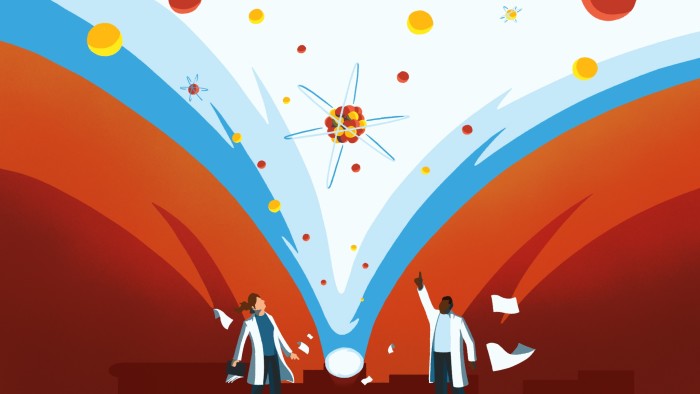The writer is a science commentator
For more than a decade, a remarkable facility has been taking shape in southern Sweden. The European Spallation Source, nearing completion in Lund and funded by 13 European countries including the UK, will use the world’s most powerful linear proton accelerator to produce the world’s most powerful source of neutrons.
That matters greatly to science: neutrons, the electrically neutral particles that sit alongside positively charged protons in the nucleus of an atom, can be used to probe the nature and structure of materials, just as X-rays once revealed the double-helix structure of DNA. There are several neutron facilities worldwide, including in the US, UK and Japan.
But the superlative power of the ESS, which will undergo initial testing this year in preparation for experiments starting in 2026, might also provide a glimpse of something special: a neutron turning into its anti-matter equivalent, an anti-neutron. Spotting this could solve one of the biggest mysteries in fundamental physics: why is there more matter than anti-matter in the universe?
“We should not exist,” Valentina Santoro, a particle physicist and senior scientist at the ESS, told me. The Big Bang, she explains, should have produced equal amounts of matter and anti-matter, that subsequently cancelled each other out. “So, maybe after the Big Bang, the majority of the universe was annihilated with just a little bit of matter left over.”
The challenge lies in explaining the leftovers. One possibility is that matter can “oscillate” into anti-matter and vice versa, and that this process somehow led to the surplus we see today. Even a solitary observation of such a neutron conversion would be Nobel Prize territory.
Neutrons, which scatter off nuclei like balls pinging around on a pool table, have long been used to peer into the heart of matter and materials. Scientists can infer the shapes and sizes of molecules and crystals by directing neutrons at them, and measuring how the particles change energy, speed and direction after the encounter. The more intense the neutron beam, the more detailed the structural information. In preparation, a data management and software centre is being built in neighbouring Denmark; the two Nordic countries are the main contributors to the €3.5bn cost.
Neutrons offer advantages over X-rays and electrons, such as being non-destructive. That makes them a valuable tool for probing fragile artefacts. In 1991, researchers at Oak Ridge National Laboratory in Tennessee used neutrons to study hair samples from Zachary Taylor, the 12th US president, to disprove theories he had been murdered by arsenic poisoning.
Neutrons can also “see” small atoms such as hydrogen, making them useful for studying such samples as fuel cells. Their magnetic spin can be harnessed to probe magnetic materials. One planned application, for example, is to develop more sensitive magnetic resonance imaging (MRI) scanners, used in cancer detection.
Marshalling neutrons, however, is no easy task; it requires the splitting of atomic nuclei. That fracturing can be done via nuclear reactors or, as in the case of ESS, by a process known as nuclear spallation. The latter involves accelerating protons to nearly the speed of light, and then crashing them into a heavy-metal target (the ESS target is a spinning disk containing three tonnes of tungsten). That collision causes neutrons to be “spalled off”, or ejected. The liberated neutrons are then slowed down, cooled and directed on for scientific use. Because of reactor limitations, spallation is seen as the future of neutron science.
The ESS facility will run at 2MW initially, Santoro says, double the power of existing sources; it will then rise to 5MW, producing 10 billion trillion neutrons per year. A more intense neutron beam should offer higher-resolution results and speed up experiments; the facility is tipped to hasten the advancement of more efficient batteries and greener plastics. Particle physicists worldwide are also roping ESS into future research plans, with the “big science” facility seen as complementary to CERN in Geneva.
Santoro and colleagues need only one of those countless neutrons to shape-shift into an anti-neutron, producing a distinctive high-energy signature. “It’s like tossing a crazy number of coins but we just need one signal,” she says, hopeful that three or four years of operation could deliver the jackpot, as well as separate insights into phenomena such as dark matter.
Amid a coming feast of neutron science — in biology, chemistry, materials science, drug development, archaeology — we might one day learn how our universe started out as cosmic leftovers.



